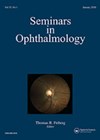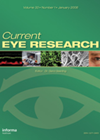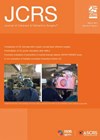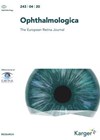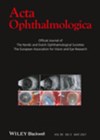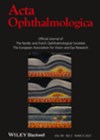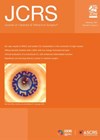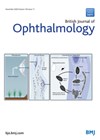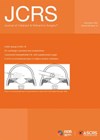
Journal Reviews
Biometric changes in phakic eyes over time
This was a single-centre retrospective cohort study of patients who attended a ‘two-stop’ preassessment clinic for consideration of cataract surgery between November 2002 and March 2015. Four biometric measurements were recorded: axial length, horizontal (K1) readings, vertical (K2) readings and...
Risk stratification to reduce intraoperative cataract surgical complications
The authors prospectively collected data on 1135 consecutive patients undergoing cataract surgery. They were risk stratified according to categories – A (no additional risk factors, 0 points), B (vitrectomy, corneal scarring, small pupil less than 3mm, shallow anterior chamber less...
IOL power calculation formulas for myopic eyes undergoing cataract surgery after excimer laser
The authors set out to compare the accuracy of four no-history formulas: Barrett True-K, Haigis-L, Shammas-PL, and Triple-S to calculate the intraocular lens (IOL) power in eyes with previous myopic photorefractive keratectomy or laser in situ keratomileusis, according to their...
Are corneal guttata an additional risk factor in complicated cataract surgery needing a future corneal transplant?
This registry-based cohort study from Sweden utilised data from the Swedish National Cataract Registry and the Swedish Cornea Transplant Registry. Patients who underwent phacoemulsification with a posterior intraocular lens between 2010 and 2012 numbered 192,476. Of these cases, 288 underwent...
Cataract extraction and microperimetry
In this study, the authors assessed retinal sensitivity before and after cataract extraction, in an effort to understand how lens opacities may affect microperimetry results in glaucoma and macular diseases. Thirty patients awaiting cataract extraction were examined and their lens...
Suture-less flanged IOL fixation vs. conventional sutured SF in IOL dislocation
The authors report the analysis of a prospective, comparative cohort study on 103 consecutive patients (103 eyes) with intraocular lens (IOL) dislocation who underwent vitrectomy with IOL removal and sutured scleral fixation (SF) (53 eyes) or flanged IOL fixation (50...
Wet AMD outcomes post cataract surgery
The authors present the findings of a retrospective study looking at the progression of wet age-related macular degeneration (AMD) in patients who underwent cataract surgery. They recruited a series of 111 patients of which 38 were men and 73 were...
Oral glycerol effect on anterior chamber depth during cataract surgery
The authors present the findings of a controlled clinical trial where cataract patients having surgery for both eyes at least seven days apart were given oral glycerol preoperatively when operating on the right eye. This meant that the left eye...
Nepafenac punctal plugs after cataract surgery: a new alternative?
The nepafenac punctal plug delivery system (N-PPDS) is an experimental L-shaped plug made of nonbiodegradable, preservative-free medical-grade silicone. It can deliver a sustained level of nepafenac for six weeks. This is a prospective, randomised, parallel-arm, double-masked, placebo-controlled, phase II pilot...
Visual and refractive outcomes and complications in FLACS versus CPS cataract surgery
This is a randomised, controlled study of 110 paired eyes from 55 patients that were randomised into either femtosecond laser-assisted cataract surgery (FLACS) or conventional phacoemulsification cataract surgery (CPS) groups. Visual, refractive outcomes, intraocular pressure (IOP) and complications were compared...
Real world results of cataract surgery in pseudoexfoliation
In this single-centre retrospective cohort study, the data of pseudoexfoliation (PXF) patients undergoing phacoemulsification cataract surgery from January 2010 to December 2019 was analysed in the National Health Service setting. The study comprised 23,329 eyes of 15,257 patients. Patients with...
Delayed angle closure in pseudophakia and repeated intravitreal therapy
The authors report two cases of acute angle closure many years after uneventful cataract surgery and posterior chamber intraocular lens (IOL) implantation. Both patients had neovascular age-related macular degeneration (AMD) and received regular intravitreal injections (24 and 25 injections in...

